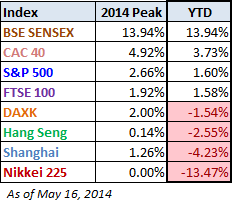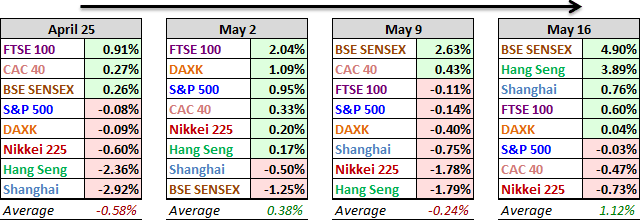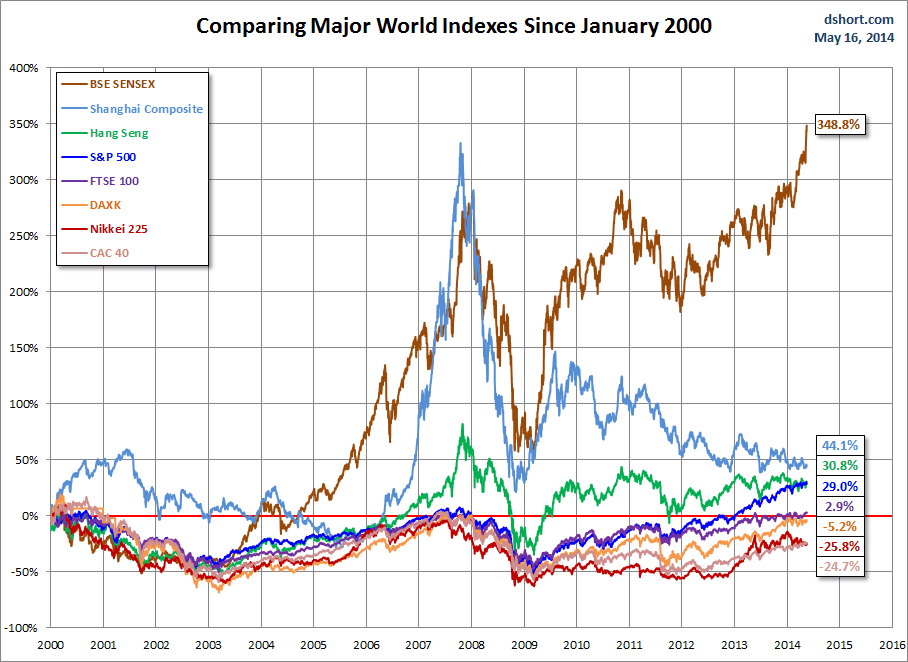Five of the eight indexes on my world markets watchlist posted gains for the week, with India's Sensex up 4.90%, thanks to Narendra Modi's landslide victory as the rising Prime Minister. This surge follows the Sensex's 2.63% rally the previous week. Hong Kong's Hang Seng also posted an impressive advance, up 3.89%. At the other end of the scale, Japan's Nikkei fell 0.73%.
The Sensex closed the week with another record high. The FTSE is 0.33% off its post-recession interim high. The Shanghai Composite remains the only index on the watch list in bear territory -- the traditional designation for a 20% decline from an interim high. The index is down 41.62% from its interim high of August 2009. See the table inset (lower right) in the chart below.
Here is a look at 2014 so far.


Here is a table highlighting the year-to-date index performance, sorted from high to low, along with the 2014 interim highs for the eight indexes. At this point, four of the eight indexes are in the green, unchanged from last week.
A Closer Look at the Last Four Weeks
The tables below provide a concise overview of performance comparisons over the past four weeks for these eight major indexes. I've also included the average for each week so that we can evaluate the performance of a specific index relative to the overall mean and better understand weekly volatility. The colors for each index name help us visualize the comparative performance over time.

The chart below illustrates the comparative performance of World Markets since March 9, 2009. The start date is arbitrary: The S&P 500, CAC 40 and BSE Sensex hit their lows on March 9th, the Nikkei 225 on March 10th, the DAX on March 6th, the FTSE on March 3rd, the Shanghai Composite on November 4, 2008, and the Hang Seng even earlier on October 27, 2008. However, by aligning on the same day and measuring the percent change, we get a better sense of the relative performance than if we align the lows.
Here is the same chart starting from the turn of 21st century. The relative over-performance of the emerging markets (Shanghai, Mumbai Sensex and Hang Seng) up to their 2007 peaks is evident, and the Sensex remains by far the top performer. The Shanghai, in contrast, formed a perfect Eiffel Tower from late 2006 to late 2009.

Check back next week for a new update.
Note from dshort: I track Germany's DAXK a price-only index, instead of the more familiar DAX index (which includes dividends), for constency with the other indexes, which do not include dividends.

